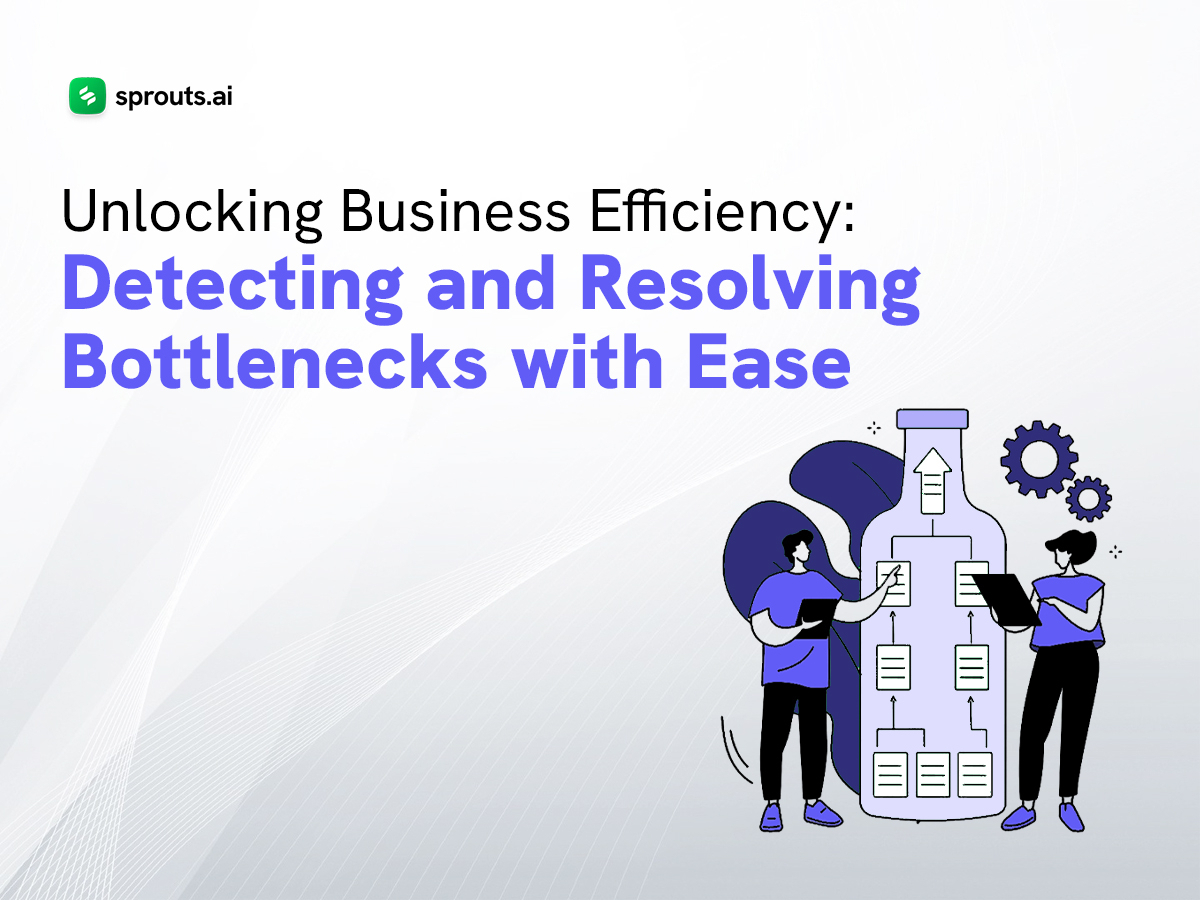Have you ever noticed your projects taking longer than expected, or specific departments getting overwhelmed? These could be signs of bottlenecks – hidden roadblocks hindering your business’s overall efficiency. This blog explores the world of bottleneck detection and resolution. We’ll learn how to identify these trouble spots, explore effective strategies to address them and show you how to leverage technology to keep your operations running smoothly. Be ready to streamline your workflows, boost productivity, and leverage the full potential of your business!
Let’s begin!
Understanding Bottlenecks
Before diving into strategies for detecting and resolving bottlenecks, it’s essential to understand what they are and how they impact business operations. Bottlenecks can occur in various aspects of a business, from manufacturing processes to customer service workflows. They often manifest as points of congestion where workloads exceed the capacity of the system, causing delays and inefficiencies.
Identifying bottlenecks requires a keen understanding of the entire workflow or process. It’s not enough to address symptoms; businesses must delve deeper to uncover the root causes of slowdowns. Common indicators of bottlenecks include increased lead times, rising error rates, and overburdened resources. By pinpointing these signs, businesses can begin the process of resolution.
Strategies for Detecting Bottlenecks
- Process Mapping: Start by mapping out the entire workflow or process, from start to finish. This visual representation allows businesses to identify areas where work may pile up or become delayed. Tools like flowcharts or value stream maps can aid in this process, providing a clear picture of how work moves through the system.
- Data Analysis: Leverage data analytics to identify patterns and trends that may indicate bottlenecks. By analyzing metrics such as cycle times, throughput, and resource utilization, businesses can pinpoint areas of inefficiency. Advanced analytics tools can provide real-time insights, enabling proactive intervention before bottlenecks escalate.
- Feedback Loops: Establish feedback loops within the organization to gather insights from frontline employees and stakeholders. They often have valuable firsthand experience with bottlenecks and can provide valuable input on areas for improvement. Regular communication channels, such as team meetings or suggestion boxes, can facilitate this feedback process.
- Simulation and Modeling: Utilize simulation and modeling techniques to simulate various scenarios and identify potential bottlenecks before they occur. This predictive approach allows businesses to optimize processes and resource allocation, reducing the likelihood of future bottlenecks. Advanced simulation software can simulate complex systems with multiple variables, providing valuable insights for decision-making.
Resolving Bottlenecks
Once bottlenecks have been detected, the next step is to implement strategies for resolution. While the specific approach may vary depending on the nature of the bottleneck and the business context, several general strategies can be effective:
- Resource Allocation: Evaluate resource allocation and redistribute workload to alleviate bottlenecks. This may involve reallocating personnel, investing in additional equipment or technology, or outsourcing certain tasks to third-party vendors. By balancing resources more effectively, businesses can increase throughput and reduce wait times.
- Process Optimization: Streamline processes and eliminate unnecessary steps to improve efficiency. Conduct a thorough review of existing workflows to identify areas for optimization, such as removing redundant tasks, standardizing procedures, or automating manual processes. Continuous improvement methodologies like Lean or Six Sigma can provide frameworks for process optimization.
- Capacity Planning: Anticipate future demand and adjust capacity accordingly to prevent future bottlenecks. This may involve scaling up production facilities, expanding workforce capabilities, or investing in scalable technology solutions. By aligning capacity with demand forecasts, businesses can ensure smoother operations and minimize the risk of bottlenecks.
- Cross-Training and Skill Development: Cross-train employees to perform multiple roles and tasks, reducing reliance on specific individuals and mitigating the impact of absenteeism or turnover. Invest in ongoing skill development programs to enhance employee capabilities and adaptability. A versatile workforce can quickly adapt to changing workloads and minimize the likelihood of bottlenecks.
Leveraging Technology Solutions
Technology plays a crucial role in detecting and resolving bottlenecks. Businesses can leverage a wide range of software solutions and tools to streamline operations and improve efficiency:
- Workflow Management Systems: Implement workflow management systems to automate task assignments, track progress, and identify potential bottlenecks in real-time. These systems provide visibility into the entire workflow, enabling proactive intervention and optimization.
- Data Analytics Platforms: Utilize data analytics platforms to analyze large datasets and identify patterns or anomalies indicative of bottlenecks. Advanced analytics techniques, such as machine learning and predictive modeling, can provide actionable insights for decision-making.
- Process Automation Tools: Automate repetitive tasks and streamline workflows with process automation tools. By reducing manual intervention and human error, businesses can accelerate processes and minimize the risk of bottlenecks.
- Collaboration Software: Facilitate communication and collaboration among teams with collaboration software tools. These platforms enable seamless information sharing, task coordination, and problem-solving, reducing communication barriers that can contribute to bottlenecks.
Efficiently detecting and resolving bottlenecks is essential for maximizing productivity and driving business success. By leveraging strategies such as process mapping, data analysis, and process optimization, businesses can identify bottlenecks early and implement effective solutions. Technology solutions such as workflow management systems, data analytics platforms, and process automation tools can streamline operations and improve efficiency. By continuously monitoring and optimizing workflows, businesses can unlock greater efficiency, reduce costs, and gain a competitive edge.

